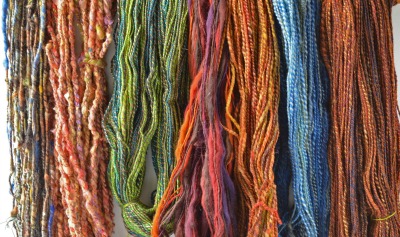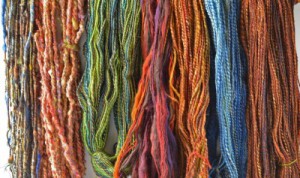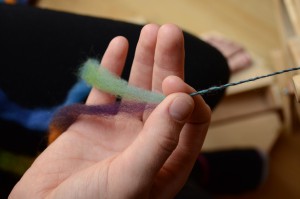It’s January and around my house that usually means a lot of wool washing is going to happen. I have 8 teaching appointments this year and almost everyone chooses classes that require unprocessed wool. That’s because around 75% of my class list consists of classes that are about processing wool from raw. I love it. I think the yanr you get when you do your own processing is better than the yarn you spin from mill processed stuff – that’s not to say that i 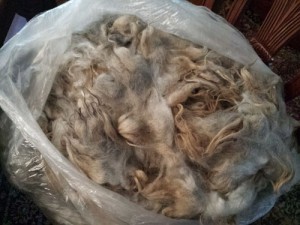 don’t spin plenty of mill process wool. It’s like thinking about cakes. The completely home made from scratch cake will always be better than the box mix but that box mix surely has its place on my shelf.
don’t spin plenty of mill process wool. It’s like thinking about cakes. The completely home made from scratch cake will always be better than the box mix but that box mix surely has its place on my shelf.
Anyway, when I get to scouring I usually wash about 60 to 80 pounds per week. This year my list has 21 breeds that need a good dunk in the hot water. That will take me about 3 weeks to complete.
Everyone has their favorite method for scouring raw fleece and I thought I’d talk about mine today.
I’ve read every article that has come in my view about scouring and talked to other spinners who love raw fleece and from all of them I developed the method that works best for me and my space. I tried doing the whole fleece in the bath tub and I hated it. I ended up wet from my shoulders to my waist. Plus all that getting down onto the floor made me sad.
I tried it in the washing machine tub but I hated it because at first it was too scary and then it was just too much moving the wet wool in and out of the tub. as the water filled and drained.
I haven’t tried the fermented suint method because I need to get the wool washed now and it takes too long…plus it stinks.
In addition, I have tried most of the wool scouring products plus Dawn and Orvus and found that my favorite is Unicorn Power Scour. One of the main reasons I love it is because there is no need to boil water to get the temperature high enough to melt the lanolin. There is some kind of magic ingredient that makes that not necessary and since I wash wool in my laundry room on the second floor, heating water would make me crazy.
So after all that, what do I do? I have 4 tubs that I use. I got them from the people at Soak. They call the ones I use Phil. You can get them from the Soak website or your local shop that sells Soak products. These basins hold between 1.5 and 2 pounds of wool depending on the breed and how fluffy it is. That’s why I have 4. If I have a fleece that weighs 8 pounds I can almost always wash the whole thing all at one time. 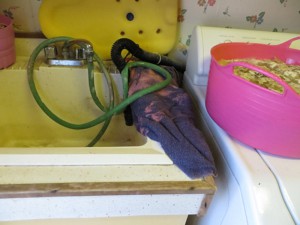
So, I line the basins up using my washer and dryer as a counter top. I have a utility sink next to the washer and I have a cut off garden hose attached to the faucet. This way I can direct the water to the tub that is furthest away without having to move it an extra time. (ignore the messy stuff around the sink, please.)
I turn on the hot water and let it run a bit until it is as hot as it will get. We have our hot water heater set to 120 degrees F. (Unicorn recommends 140 but this temp works for me.) Then I start filling the 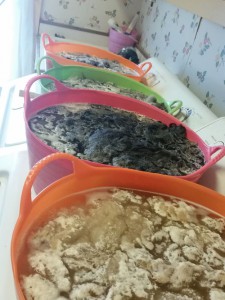 buckets until they are a little over 3/4 full. It seems like a lot when you are going to put the wool in but the wool soaks up some water and often I have to top them off a bit after the wool is in.
buckets until they are a little over 3/4 full. It seems like a lot when you are going to put the wool in but the wool soaks up some water and often I have to top them off a bit after the wool is in.
But before I add the wool I add the wool wash. The Power Scour works sort of like dye as far as how you determine the amount to use. It is based on the weight of the wool you want to wash. For these basins when I am washing about 2 pounds I add around 2 to 3 tablespoons in the first soak.
When I add the wool I push it down into the water. I have a couple of paint stirrers on the shelf for this purpose.
I soak the wool in the hot water and scour for at least 15 minutes. It’s important to not forget about the wool at this point because if the water cools and the lanolin sets back onto the wool it can be much more difficult to remove.
So, after 15 minutes I take the basin to the sink and dump it out. I squeeze out a bit of the water and refill the basin with hot water. At this point I add half as much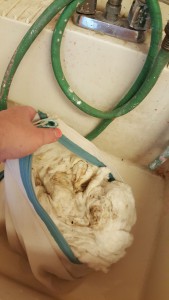 of the scour to the basin. After all 4 have been emptied and refilled I let them soak for another 15 minutes.
of the scour to the basin. After all 4 have been emptied and refilled I let them soak for another 15 minutes.
I repeat the process 2 more times but with only clear water. So that’s 2 washes and 2 rinses. After the last soak the water may not be clear. There may still be some dirt showing but I don’t worry about it. There are several more opportunities to get the last bit of dirt out.
At this point when i dump out the basin in the sink, I transfer the wool into lingerie bags. I 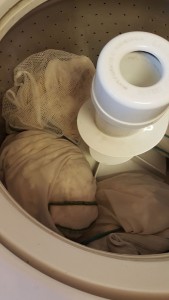 used to just squeeze out as much water as I could and then roll the wool in towels but I like to spin it out in the washer now. It gets out more water and I don’t have as many sopping wet towels laying around.
used to just squeeze out as much water as I could and then roll the wool in towels but I like to spin it out in the washer now. It gets out more water and I don’t have as many sopping wet towels laying around.
One bag will hold all of the wool from one basin.
I let it go through the whole spin cycle. Make sure that your washer doesn’t spray water during the spin. If it does, you can turn off the water going to the washer during this part.
And finally I take the wool to the drying racks.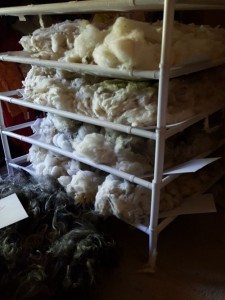 These are just sweater drying racks that are stackable. I have several of them and if I run out of space i move to the floor. I wash wool until there is no more space and then I may need to take a a day or off while the fleeces dry and some space is available. I make sure to write the breed on a card and place it next to the wool. Sometimes if you have several white fleeces drying next to each other it can be a little confusing so the labels are important.
These are just sweater drying racks that are stackable. I have several of them and if I run out of space i move to the floor. I wash wool until there is no more space and then I may need to take a a day or off while the fleeces dry and some space is available. I make sure to write the breed on a card and place it next to the wool. Sometimes if you have several white fleeces drying next to each other it can be a little confusing so the labels are important.
All of this takes about 90 minutes from start to finish and I feel pretty accomplished.
Do yu have any special things you do to wash your fleece?
If you are interested in playing with the fleeces i’m scouring now, come and see me in Boulder Colorado! I’ll be ther in February. Here’s the link for registration. http://www.handweaversofboulder.org/explore/forms/HGBBethSmithRegistration.pdf
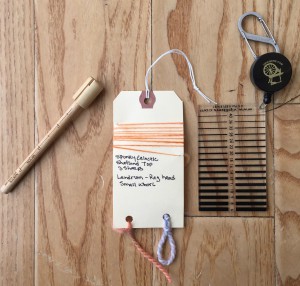 There are a lot of different ways to keep track of your yarn for consistency while spinning. I like the lazy ways. Here are four ways to keep track that I use when I spin.
There are a lot of different ways to keep track of your yarn for consistency while spinning. I like the lazy ways. Here are four ways to keep track that I use when I spin.
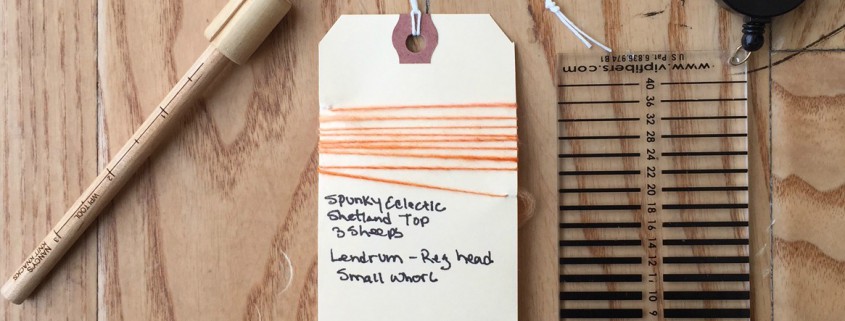
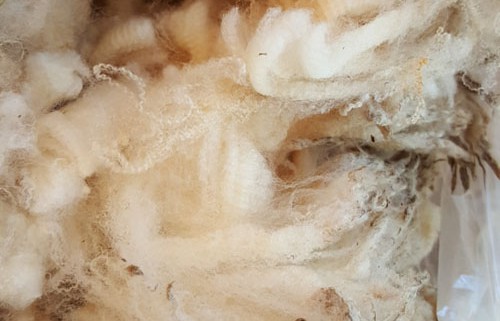
 don’t spin plenty of mill process wool. It’s like thinking about cakes. The completely home made from scratch cake will always be better than the box mix but that box mix surely has its place on my shelf.
don’t spin plenty of mill process wool. It’s like thinking about cakes. The completely home made from scratch cake will always be better than the box mix but that box mix surely has its place on my shelf.
 buckets until they are a little over 3/4 full. It seems like a lot when you are going to put the wool in but the wool soaks up some water and often I have to top them off a bit after the wool is in.
buckets until they are a little over 3/4 full. It seems like a lot when you are going to put the wool in but the wool soaks up some water and often I have to top them off a bit after the wool is in. of the scour to the basin. After all 4 have been emptied and refilled I let them soak for another 15 minutes.
of the scour to the basin. After all 4 have been emptied and refilled I let them soak for another 15 minutes. used to just squeeze out as much water as I could and then roll the wool in towels but I like to spin it out in the washer now. It gets out more water and I don’t have as many sopping wet towels laying around.
used to just squeeze out as much water as I could and then roll the wool in towels but I like to spin it out in the washer now. It gets out more water and I don’t have as many sopping wet towels laying around. These are just sweater drying racks that are stackable. I have several of them and if I run out of space i move to the floor. I wash wool until there is no more space and then I may need to take a a day or off while the fleeces dry and some space is available. I make sure to write the breed on a card and place it next to the wool. Sometimes if you have several white fleeces drying next to each other it can be a little confusing so the labels are important.
These are just sweater drying racks that are stackable. I have several of them and if I run out of space i move to the floor. I wash wool until there is no more space and then I may need to take a a day or off while the fleeces dry and some space is available. I make sure to write the breed on a card and place it next to the wool. Sometimes if you have several white fleeces drying next to each other it can be a little confusing so the labels are important.
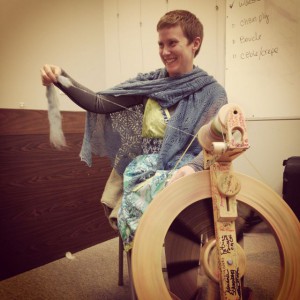

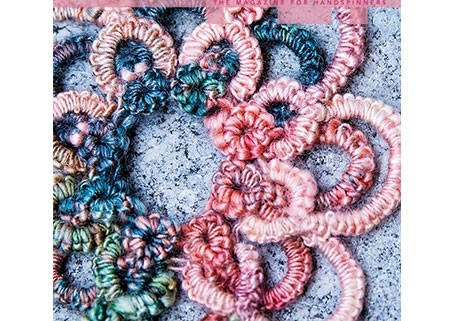
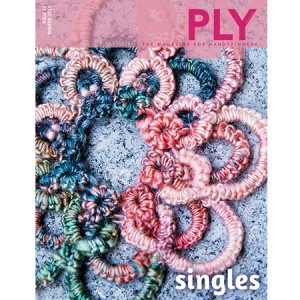 Jacey’s opening article in this issue starts – “Any yarn is possible, even singles!” And in this issue, that’s the goal – to show you that spinning a singles yarn is definitely possible, even if you’ve struggled with it in the past. The issue is full of “how” articles that’ll get you spinning, but it’s also got a fair number of “why” articles that’ll get you thinking!
Jacey’s opening article in this issue starts – “Any yarn is possible, even singles!” And in this issue, that’s the goal – to show you that spinning a singles yarn is definitely possible, even if you’ve struggled with it in the past. The issue is full of “how” articles that’ll get you spinning, but it’s also got a fair number of “why” articles that’ll get you thinking!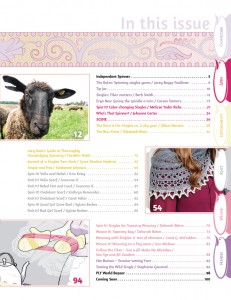
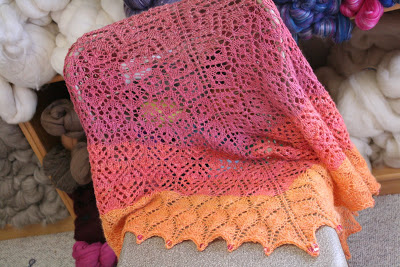
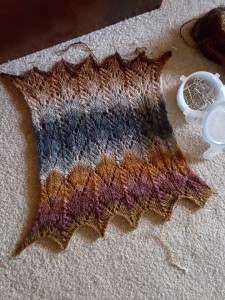
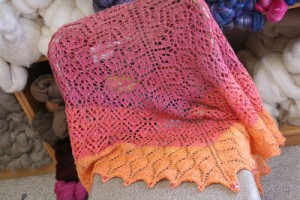
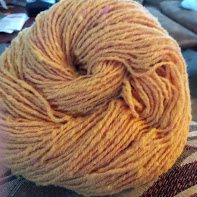
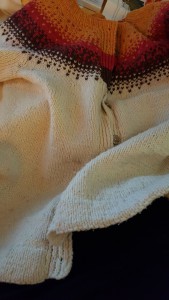 Sweater
Sweater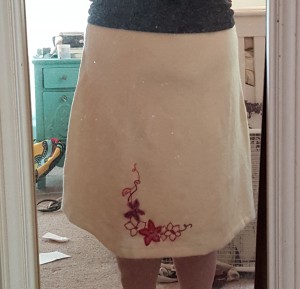
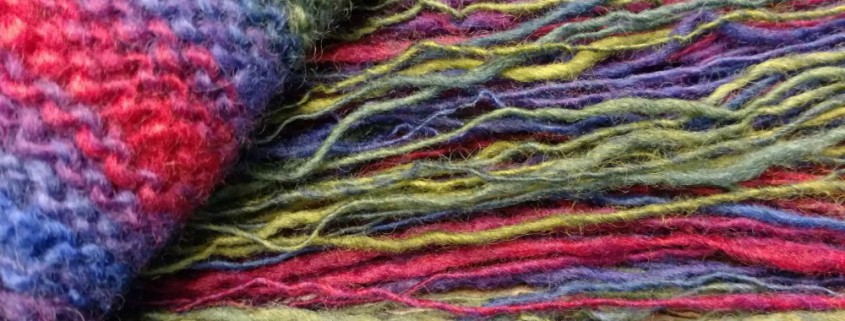
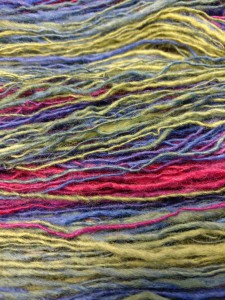 he fiber. Success! I had made a single that would stay a single, and with no plying to do I was practically done! The next challenge would be winding the yarn off the bobbin. (See above comment re: I accidentally untwist everything I knit.) To my complete surprise I was able to wind the yarn from the bobbin easily and with no breaks. More Success! Perhaps it would even make it through its bath in one piece! Maybe I’d even manage to not felt it into a huge mess! I eagerly drew a tub of water and deposited the fiber within. What emerged some time later (I tend to forget when I put things in to soak. Surely I’m not the only one? No? Just me? Cool) was the most uneven mass of yarn I had created in years. When I first learned to spin I read that once you attain the thin, beautiful, even sock yarn of your dreams it is nigh impossible to spin anything other than fingering weight without extreme concentration and clarity of intent. Since I went in to this with neither of those qualities, I expected the worst. This yarn came out completely uneven and crazy, but also squishier and softer than anything else I’d managed to create thus far. So maybe it wasn’t a failed experiment after all!
he fiber. Success! I had made a single that would stay a single, and with no plying to do I was practically done! The next challenge would be winding the yarn off the bobbin. (See above comment re: I accidentally untwist everything I knit.) To my complete surprise I was able to wind the yarn from the bobbin easily and with no breaks. More Success! Perhaps it would even make it through its bath in one piece! Maybe I’d even manage to not felt it into a huge mess! I eagerly drew a tub of water and deposited the fiber within. What emerged some time later (I tend to forget when I put things in to soak. Surely I’m not the only one? No? Just me? Cool) was the most uneven mass of yarn I had created in years. When I first learned to spin I read that once you attain the thin, beautiful, even sock yarn of your dreams it is nigh impossible to spin anything other than fingering weight without extreme concentration and clarity of intent. Since I went in to this with neither of those qualities, I expected the worst. This yarn came out completely uneven and crazy, but also squishier and softer than anything else I’d managed to create thus far. So maybe it wasn’t a failed experiment after all!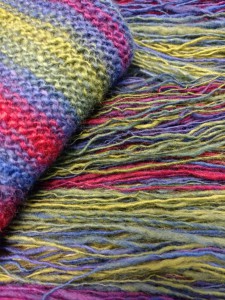
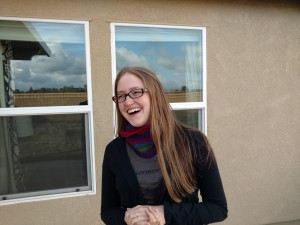
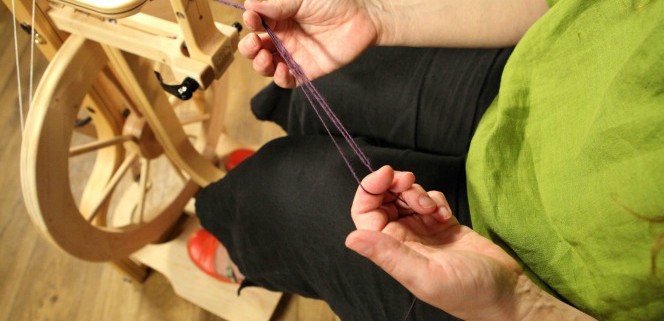
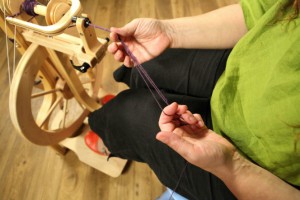
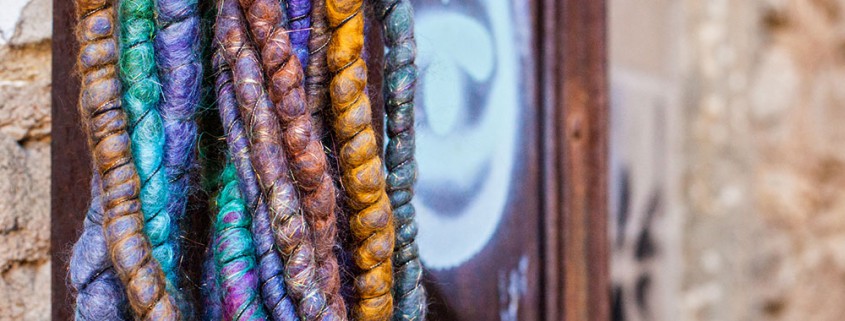
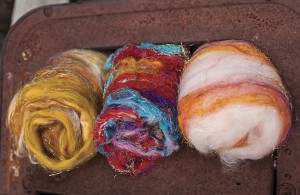 It’s that time again, the time when I ask you to review the current issue. I want to know what you think. I have some gorgeous textured batts to send one lucky reviewer/subscriber. They’re the kind of batts that make fantastic corespun yarn, the kind that Steph Gorin wrote about in this very issue. If you’ve never tried this technique, it’s be the perfect opportunity to give it a whirl. Of course, if you’ve already tried it, you don’t have any need for more fiber do you? Oh, right, spinners always need more gorgeous fiber!
It’s that time again, the time when I ask you to review the current issue. I want to know what you think. I have some gorgeous textured batts to send one lucky reviewer/subscriber. They’re the kind of batts that make fantastic corespun yarn, the kind that Steph Gorin wrote about in this very issue. If you’ve never tried this technique, it’s be the perfect opportunity to give it a whirl. Of course, if you’ve already tried it, you don’t have any need for more fiber do you? Oh, right, spinners always need more gorgeous fiber! 